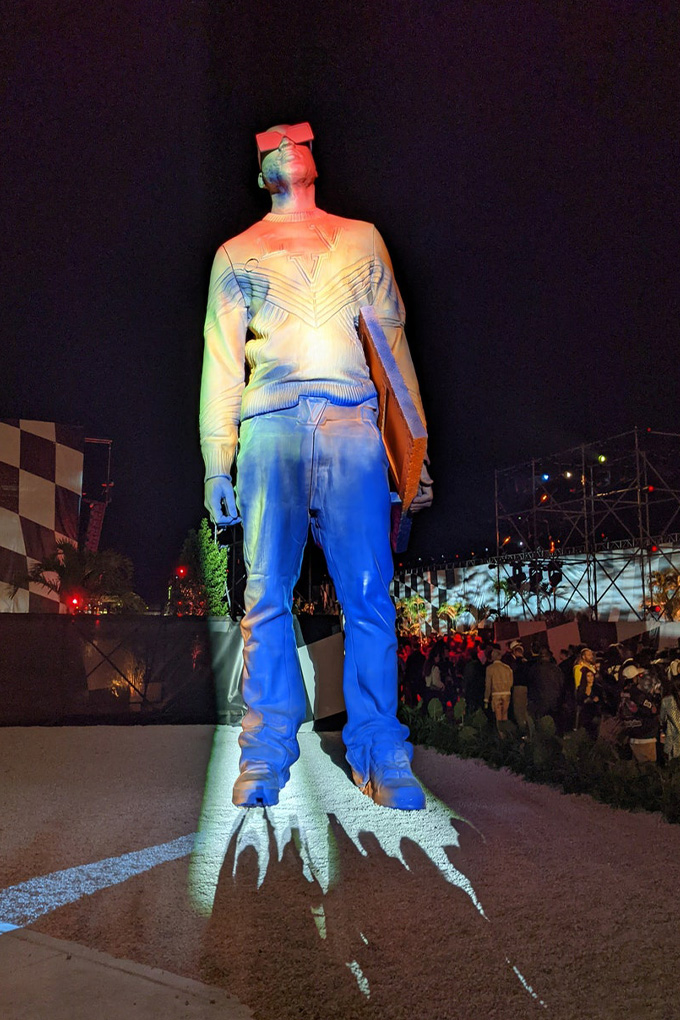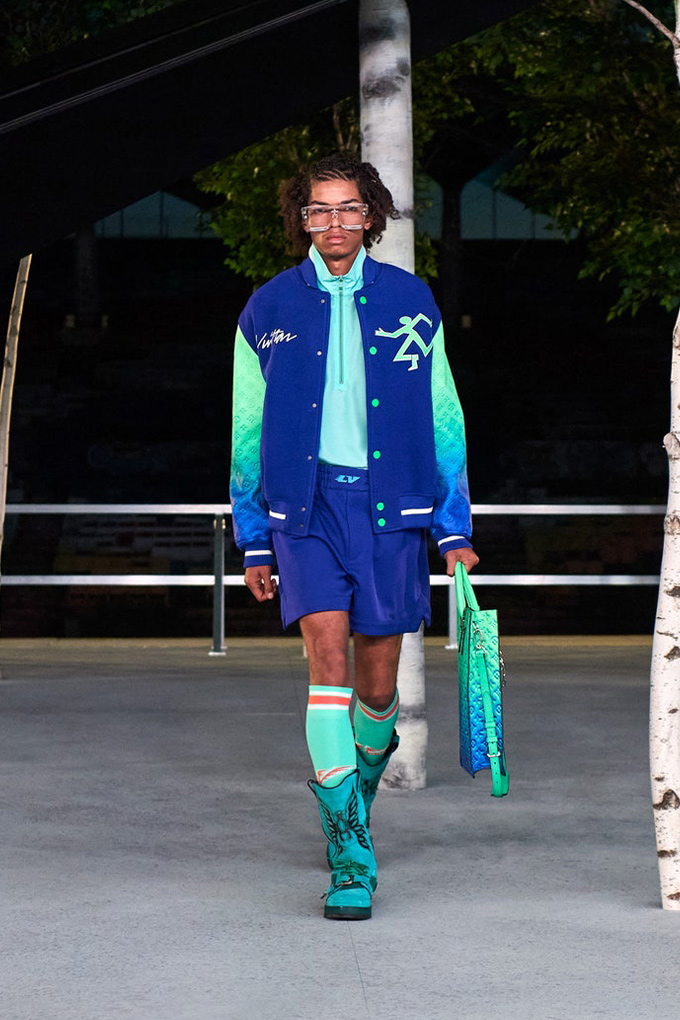Sunday’s news of the passing of Virgil Abloh, so young and so alive with insight, enthusiasm, and generosity, came as a sudden and horrendous surprise to the world of fashion and beyond. And yet walking out of this Abloh-designed Louis Vuitton show in Miami’s Maritime Marina tonight—little more than 48 hours after that terrible news broke—it was impossible to ignore the impression that Virgil was not only cognisant of what proved his fate, he was also the master of it.
How else to rationalise the symbolism of the monumental statue of Abloh that was positioned between show and post-show concert venue and seemed to be staring yearningly at a scarlet, LV-logoed hot air balloon that constantly tugged against its moorings, as if hankering to float up and away? How else to process a collection, even if most of it was a reiteration of June’s Paris show, that like Abloh’s unquenchable peripatetic practice ranged with fearlessness and cultural pride across a frame of reference wide and high? How else to listen to a soundtrack, warmed up by ‘Strawberry Fields Forever’ pre-show, that was according to those who know barely tweaked after his passing yet which was eulogical in both its joyfulness and melancholy? Or the drone-choreographed light display that animated a paper plane darting into the beyond before the phrase spelled out “Virgil was here”?

This show had been diarised as a postmodern trunk show, a fancy client-facing event to coincide with Art Basel that was more stanza than chapter in the ongoing narrative of Abloh at Vuitton. When Sunday’s news dropped, all that changed. The Arnaults flew in en masse. Kanye West, Kim Kardashian West, and their daughter North sat close together opposite them. Rihanna, A$AP Rocky, and countless others who were both touched and inspired by Abloh came to join the audience.
Before the models emerged, Louis Vuitton’s CEO Michael Burke made a speech in which his voice sometimes cracked as the offshore wind rustled against the runway planted birch trees, and we all sat silent. He said: “The deeply moving show we are about to see is born out of an idea Virgil and I first discussed three years ago. It is based around the traditional coming of age narrative, but of course, being Virgil, he spun and recontextualised the concept for the 21st century, and in doing so expressed his own unique talents and vision. This idea of coming of age was important to Virgil because inspiring and empowering younger generations defined who he was. He used the platform he had to break boundaries, to open doors, to shed light on his creative passions, art, design, music, and of course, fashion, so that everybody could see inside—not only to dream of being part of that world, but to also find ways to make that dream a reality.”
As the models moved in the dim dusk light, clad in clothes that joyfully busted archetypes and deftly drifted between as many genres as the soundtrack, we were for perhaps one last time in a place where everything was of Abloh’s own design. While the many people here and beyond who were so inspired by Virgil Abloh will doubtless ensure that his design and philosophy live on in the canon of contemporary fashion, it seems so cruel that he could not be here to watch the show unfold with us.

This article was originally published on Vogue.com.





